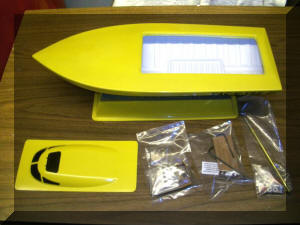 |
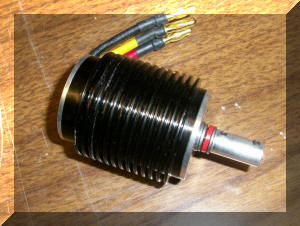 |
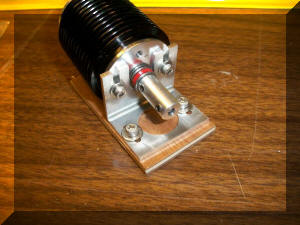 |
| Kit with Cracker Rudder and Drive |
12S air-cooled car motor with thrust
bearing installed with 1/8" coupling. |
Bolted to motor mount. |
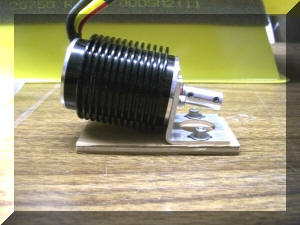 |
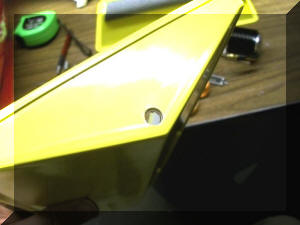 |
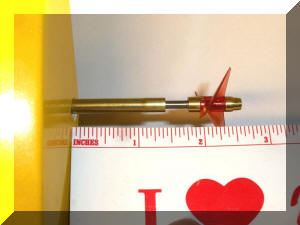 |
| The angle can be adjusted with careful
force. |
Hole in transom. A step drill works
well. On the inside, the hole is about 1/8" from the bottom of the
liner. |
2 inches to the leading edge of the
prop, 2-1/4" to the blade center, works well. Keeps the prop under water
at start-up. |
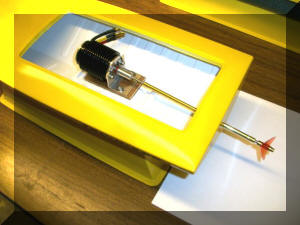 |
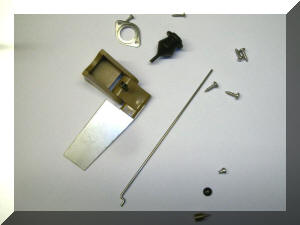 |
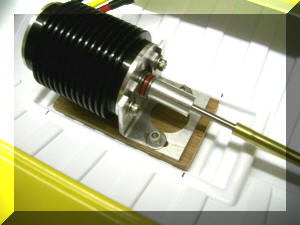 |
| Drive set in place for angle and fit
check. The shaft is tightened to the coupling. |
Rudder Assembly. |
Once you locate the prop from the
transom, mark the position of the motor in the motor recess of the hull
liner. |
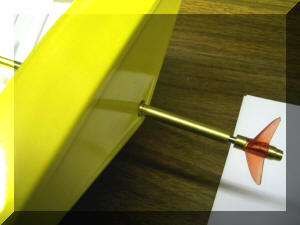 |
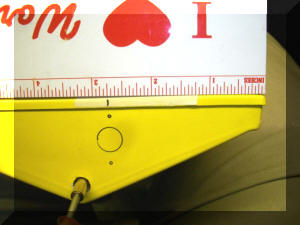 |
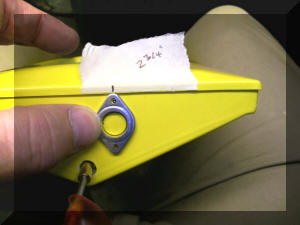 |
| Be sure to leave a space between the
stern tube and the prop drive dog. |
Location of rudder pushrod hole. |
Bru-Line rudder boot fitting. |
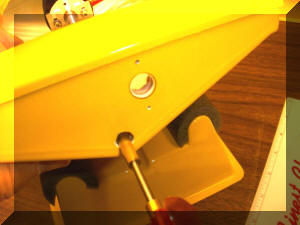 |
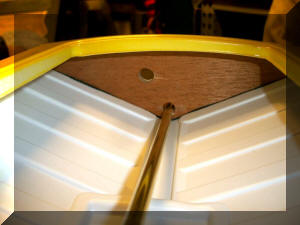 |
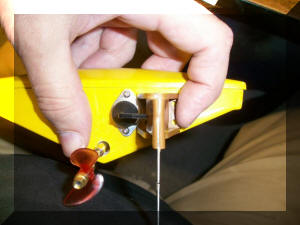 |
| Drilled hole with a step-drill. No rush. |
Holes from the inside. |
Temporarily hold rudder in place. Mark
the 4 holes for the rudder bracket. |
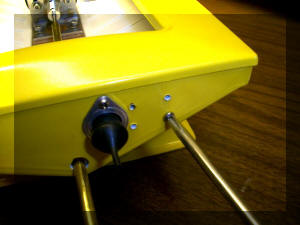 |
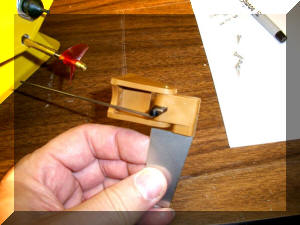 |
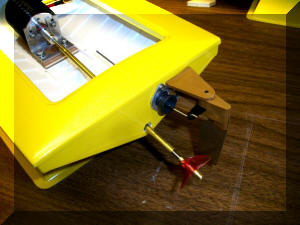 |
| Drill the 1 holes with a 1/16" bit.
Insert screws to thread the holes. |
Install the rudder pushrod as shown,
from the bottom of the rudder arm. |
Put a little grease on the rudder
pushrod and push through the boot as you set the rudder against the
transom. Attach with screws. |
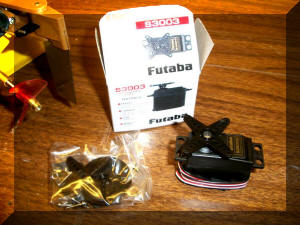 |
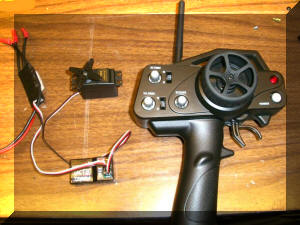 |
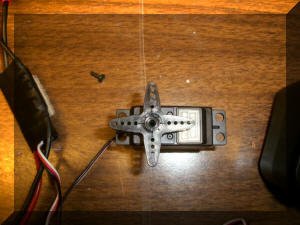 |
| Standard Futaba servo. |
Center the servo. Radio and receiver ON.
Wheel and adjustments centered. |
Remove the servo arm and re-install in
this position so it is now centered with the radio. Note that the rudder
wire comes out on the left side. |
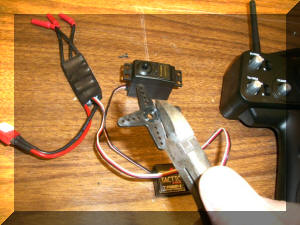 |
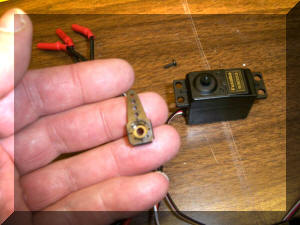 |
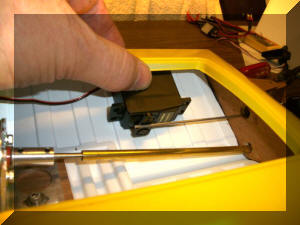 |
| Clip off the left, right, and bottom
arms. |
Trimmed arm. Install on servo with
screw. |
Locate the servo to the hull. Determine
how to bend the rudder pushrod to align with the 2nd hole from the end
of the arm. |
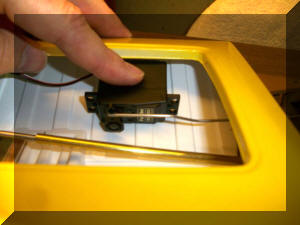 |
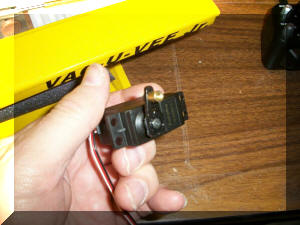 |
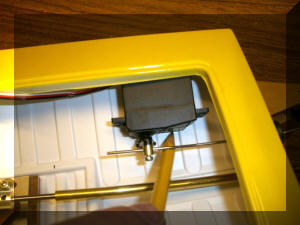 |
| Check again. Note the slight Z bend in
the pushrod. |
Attach the EZ-Connector to the rudder
arm 2nd hole from the end. |
Set the rudder in place. Check the
alignment. There should be no binding. The pushrod should be centered in
the transom hole. Mark with pencil. |
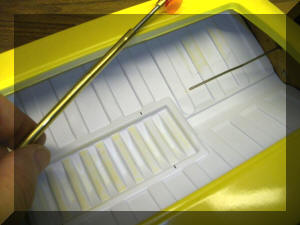 |
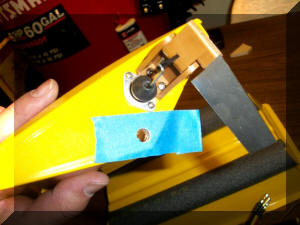 |
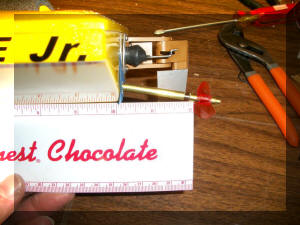 |
| Remove the servo. Sand the floor where
it will be glued. Score or sand the bottom side of the servo. Sand the
motor tray bottom, and the tray recess. Sand the stern tube in front of
the transom mark. |
Tape over the transom hole. |
Check again. The ruler is set to the
bottom of the keel. You want it to intersect with the propeller shaft
here. |
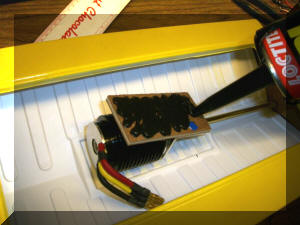 |
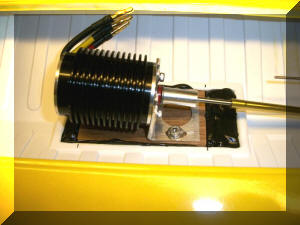 |
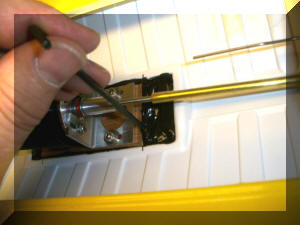 |
| Apply sealant to the motor mount base
and into the recess. |
Set the motor in place checking on the
alignment of the shaft. |
Push sealant around the base. |
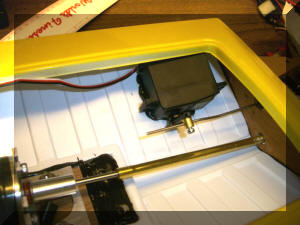 |
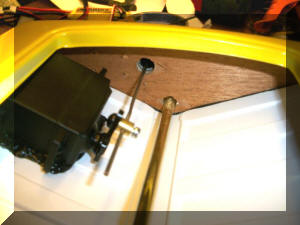 |
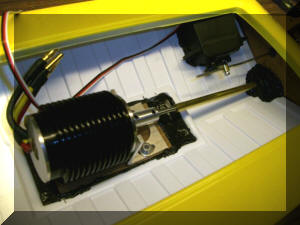 |
| Bed the servo into the sealant. |
At this point, the stern tube will still
slide up and down on the 1/8" shaft. |
Move the stern tube to it's proper
location, some space between it and the prop drive dog, then apply
sealant to secure the stern tube. |
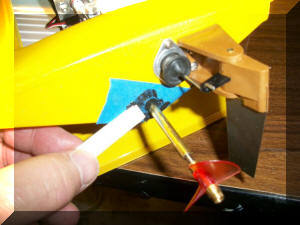 |
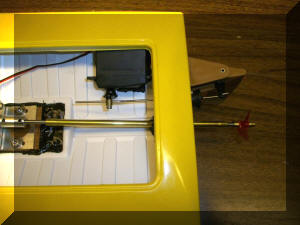 |
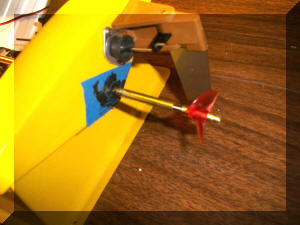 |
| Use a plastic scrap to smooth out the
sealant where it comes out of the transom. Make sure it is on all sides
of the stern tube. Rotating the stern tube will distribute the sealant. |
Before the sealant cures, check all
measurements. If the servo wants to move, you can tape it in place.
Usually not necessary for this sealant. |
Check for the proper length of the stern
tube and shaft, out of the transom. |
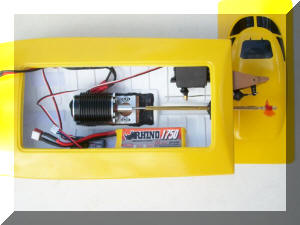 |
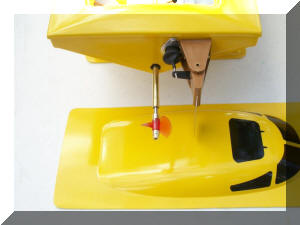 |
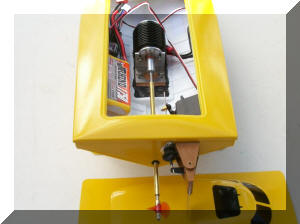 |
| Finished installation. Battery on the
left, ESC (hidden under the side of the opening) on the right, receiver
on the left can balance the boat well. |
Check for a centered rudder. Adjust with
the radio rudder trim adjustment if needed. |
Let the sealant cure for 48 hours before
using. |
| |
|
|
| |
|
|
| |
|
|












































 TM
TM